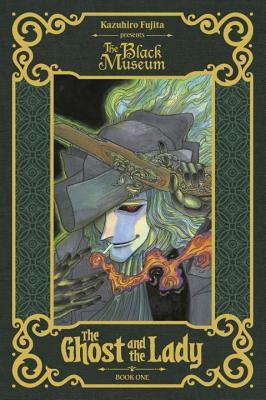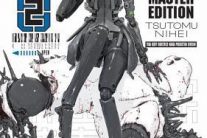 The Ghost and the Lady Vol. 1
The Ghost and the Lady Vol. 1By: Kazuhiro Fujita
Release Date: (English Translation) October 25, 2016; (Original) July 23, 2015
Publisher: Kodansha Comics
Series: The Ghost and the Lady
Rating:
My husband recommended I read The Ghost and the Lady Volume 1, not because he knew anything about the story or that it was created by the same mangaka that created Ushio and Tora, but because he saw the fabulously dressed man with a fabulous hat on the cover. And boy do I like fabulously dressed men with fabulous hats. Hey, he knows me well. As it turned out, this was a fantastic move as it has nearly everything I love in it – fabulously dressed people, a healthy dose of fantasy, awesome fights, some brilliant artwork, and (my favorite) history.
The story follows the Man in Grey, a ghost who occupies the Theatre Royal on Drury Lane. There he meets Florence Nightingale, with whom he stays beside through her journey into nursing and war torn battlefields. All of this is told in retrospect with the Man in Grey explaining the story of a strange object – two bullets fused together – kept in the Black Museum, an evidence room deep below Scotland Yard.
I read this entire manga in one sitting. Granted, that isn’t necessarily difficult to do with manga, even those that are over 400 pages long. But it still shows how much I enjoyed this manga.
The Man in Grey is an intriguing character. Already a very old ghost by the time he meets Florence Nightingale in the early 1800s, his past is a mystery, even to himself. What he does know is the spiritual world, the world of ghosts and shadows and creeping things. A world that Florence Nightingale can inexplicably see.
The world spun in this manga is one steeped in the otherworldly. There are ghosts, of course, and plenty of other monstrous looking spirits called eidolons. Humans, or most of them, anyway, cannot see eidolons, which are spirits attached to every human that feed off of negativity and can grow to monstrous size and form.
The story follows the real life tale of Florence Nightingale, only with supernatural elements playing into the account. Notes are included in margins on the characters, their lives, or the events of the time, though only sporadically. The book is very serious on getting Florence Nightingale, those around her, and their stories correct. There’s even a work’s cited section at the end of the manga, something that, coming from a family of historians, made me appreciate this manga even more.
The action takes place in two places here – human against human and spirit against spirit, or ghost against eidolon. The Man in Grey, though initially tasked with ending Florence’s life, winds up fighting for her instead. At first, this is quite frequent. The Man in Grey is her veritable knight in shining armor, fighting in her stead in the world of ghosts and spirits when she cannot do so, whether by her own limitations or something else, in the real world. As the story progresses, this occurs less and less with the Man in Grey becoming more of an observer than an active participant in Florence’s fight for nursing and her own future. There is real character development here, slow and gradual but never missing.
As for the art, I quite liked it for the most part. It has an older feel, the sort of pencil-like drawings which were more prolific when I was a child as opposed to the very clean, perfect lines of today. Shading is done with hatch marks. Lines burst from the page, showing motion and anger as eidolons and ghosts fight.
The fight scenes in particular are worth mentioning. There are some gorgeous depictions of The Man in Grey bursting from the frame of his panel as he fights against eidolons. The detail in these panels is at once very detailed and a bit messy – very precise in the details of the beings forms or dress with a great deal of shading, but messy in composition, with bodies twirling about one another, dissipating and reappearing, as only the formless can do. Panels showing fights in the spirit world are full of life. Conversely, scenes showing battlefields or battles between humans are extremely static. Almost no movement fills those panels. Characters are very static, either crumpled in pain and riddled with wounds or else marching solemnly through the frame, taking no notice that they are watched either by other characters or the viewer.
There are some sections where we see Florence with less than the appropriate amount of clothing. However, I don’t think this is done purely for fan service. As other characters berate, dismiss, and cut Florence down verbally her clothes are slashed by invisible weapons and explode in much the same way any shonen protagonist’s shirt will explode at the start of battle. This is deliberately done, a physical representation of the hurt words can have, the damage they can do, just how dejected and depressed than can make a person, and the determination they can unwittingly fill a person with as well.
The Ghost and the Lady Volume 1 by Kazuhiro Fujita is a manga that took me by surprise. I was never overly familiar with Florence Nightingale’s story, and so was more taken by the man on the front cover in the dapper jacket and cool hat. Now, I’m staying for Florence, for the fierce spirit that shines, even when she’s afraid and to watch the ever certain Man in Grey as he faces demons of his own. The second and last volume of this series is already sitting on my desk, and will be read soon enough. Because I can’t stay away from this. It’s just too wonderful.






Post a comment